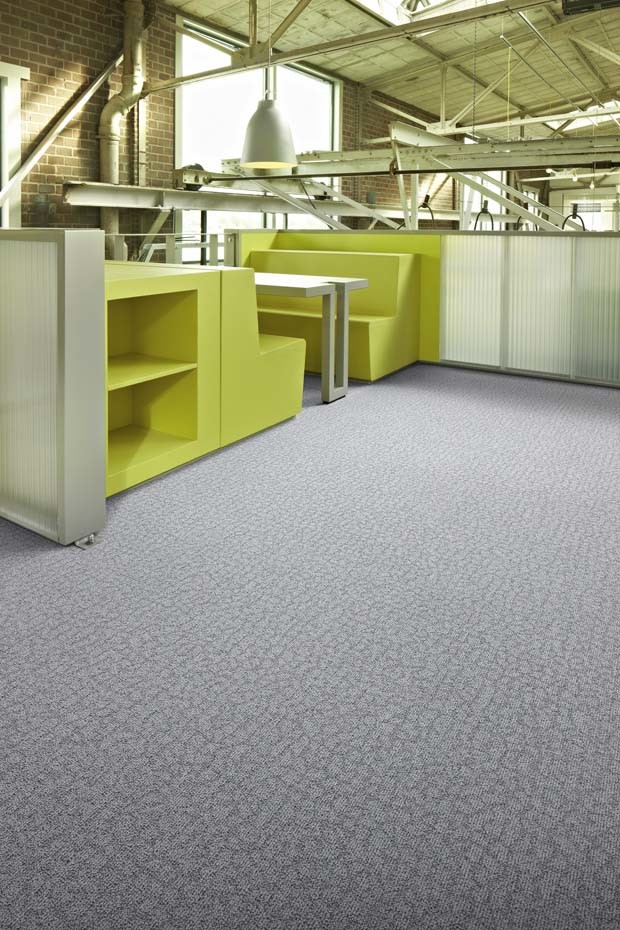Carpet tiles are easier to install, repair and remove than traditional broadloom carpets and they are becoming more sustainable, says Brad Clarke from Nolan UDA, an Australian Supplier of carpet tiles.
Speaking with Architecture and Design, Clarke explained that recent innovations in carpet tiles, which include diversity in size, colour and texture and a movement towards more environmental manufacturing, are bolstered by a demand in the market.
“The demand and supply for more environmental choices in carpet tiles is driven by the market,” he says.
“A lot of government and major firms want to be seen as being environmentally conscious and friendly so naturally suppliers will work to offer the products that facilitate this.”
Clarke also highlighted the current commitment from suppliers towards good product stewardship and a level four certification from the Environmental Certification Scheme (ECS), a certification which also achieves a Level A on the Green Star environmental ratings tool.

^The DESSO AirMaster tiles are PVC free and designed for disassembly. They also contribute to Indoor Environment Quality (IEQ) by removing fine dust particles from the air (beneficial for asthma sufferers, for example).
Administered by the Carpet Institute of Australia, the ECS is a labelling scheme that provides a guide to the environmental performance of certified carpet.
It covers things like VOC (indoor air quality), banned toxic materials and dyes, manufacturing Environmental Management Systems and fitness for purpose (carpet quality).
“Most suppliers will achieve some sort of certification but the real difference between level three and level four on the scheme is about product stewardship, which most commonly is a commitment to recycling or reusing the product,” said Clarke.
Clarke explained that the recycled and reused content is generally used in the backing of the tile, but most suppliers will also offer products that use recycled content in their face yarn.
What does that label mean?

Most Australian carpet tile manufacturers and suppliers participate in the Australian Carpet Classification Scheme (ACCS) which rates carpets according to their durability and appearance retention, placing them in categories on the advice from an expert panel.
Carpets are classified according to suitability for use in residential and/or contract installations and in different walking ‘traffic’ conditions described as light, medium, heavy and extra heavy. They are then given a label as seen above.
‘Residential’ carpets are rated using a 6-star classification system, while ‘contract’ carpets are rated out of four.
Click on the images below to enlarge and to view the ACCS rating scheme.


After this ‘Fitness for Purpose’ assessment, carpet manufacturers can then choose to participate in the ECS which further rates the carpet on a four tier system according to its environmental performance throughout the full product lifecycle.
The ECS assesses the VOC Emissions that amount from manufacturing of the tile, its acoustic performance (sound absorption, reverberation and isolation) and its thermal insulation.
The ECS also includes a banned list of chemicals and dyestuffs that cannot be used in an ECS rated carpet tile.
The Scheme consists of 4 levels of certification with incrementally more demanding performance criteria.
ECS Levels 2, 3 & 4 (with 2 options) have been developed to comply with the requirements of Green Building Council of Australia’s (GBCA) Assessment Framework for Product Certification Schemes.
Click to Enlarge:

All Images: carpetinstitute.com.au unless stated.

